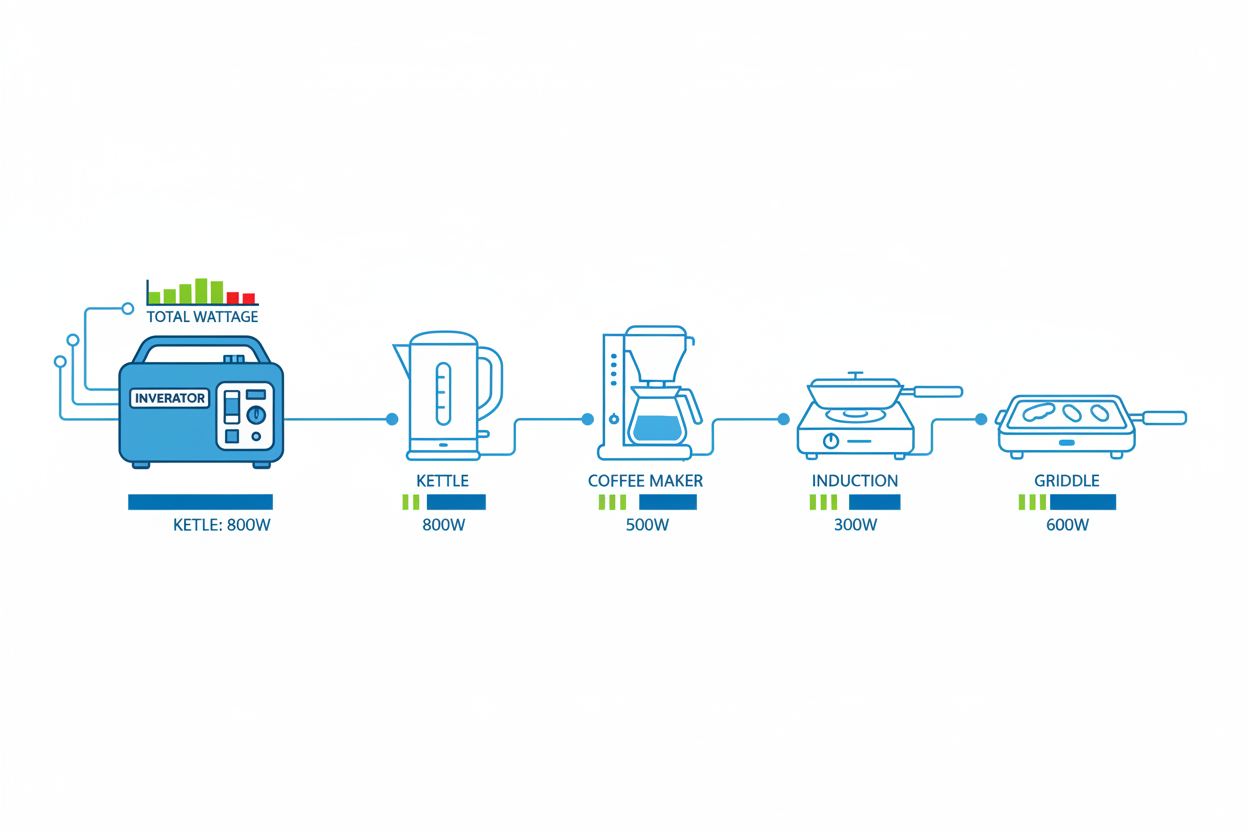What Cooking Devices Can a Camping Generator Run?
Many campers rely on electric cooking gear for fast meals, especially when fire restrictions limit open flames. A quiet inverter generator supports several compact kitchen appliances with proper wattage planning.
Understanding load requirements ensures safe cooking at any campsite.

Common Camping Cooking Appliances
Most compact cooking appliances fall between three hundred and one thousand watts. These items operate safely with a two thousand to three thousand watt inverter generator.
- Electric kettle: 800–1200W
- Coffee maker: 600–900W
- Mini rice cooker: 300–500W
- Electric skillet: 800–1000W
- Low-watt induction burner: 600–1200W
- Toaster (compact): 700–900W
These appliances run briefly, making them compatible with portable generators.
Choosing the Right Generator for Cooking
A generator with at least two thousand watts of peak capacity handles most compact cooking tools. Larger appliances may exceed safe limits for lightweight camping generators.
Campers should allow cooking devices to run individually to prevent overload.
- 1000–2000W generators: basic cooking
- 2000–2400W generators: coffee, kettle, skillet
- 2400–3000W generators: induction cooking and multi-device use
Managing Cooking Loads Safely
Cooking appliances draw steady, high wattage for several minutes. Campers should avoid running coolers or pumps at the same time to maintain safe margins.
Keep total running watts under seventy percent of the generator’s rated capacity.
- Run kettle alone during boiling.
- Pause cooler cycles before coffee brewing.
- Check surge watt ratings before using induction burners.
Benefits of Inverter Generators for Cooking
Inverter generators provide stable power for heating elements and sensitive controls. They maintain steady voltage, reducing risk of temperature swings or device malfunction.
Eco mode reduces noise when powering lower-watt appliances like rice cookers.
Cooking Options That Do Not Require Generators
Many campers mix electric and non-electric cooking methods for flexibility. Fire restrictions often make electric cooking a cleaner, safer alternative.
- Butane stove (where allowed)
- Propane camp stove
- Charcoal grill (where allowed)
- Thermal cooker
Ideal Cooking Scenarios for Camping Generators
Generators shine when campers need fast, convenient meals without fire hazards. Short-cook appliances pair well with small inverter models.
- Morning coffee and tea
- Quick boiling for dehydrated meals
- Rice cooking for group meals
- Small-skillet breakfasts
Conclusion
A camping generator can safely power kettles, coffee makers, and compact cooking appliances with the right wattage planning.
Choosing appropriate devices ensures efficient, safe cooking at any campsite.
